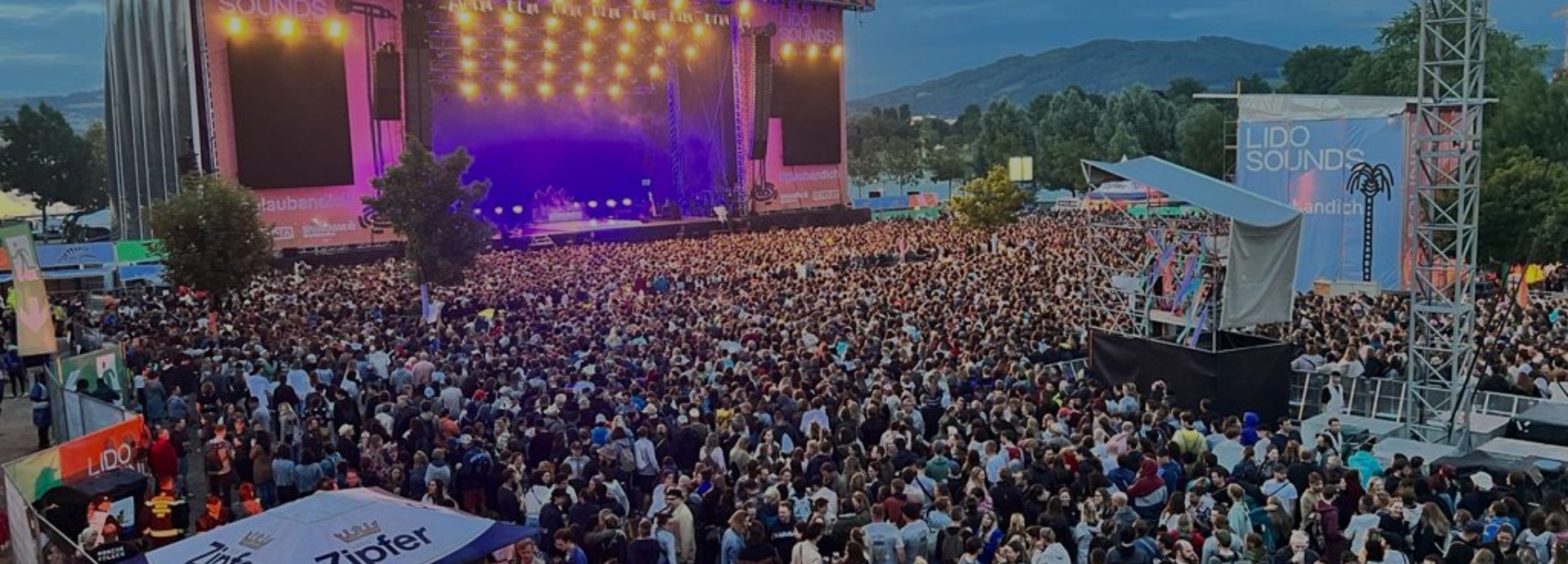Hey friends, it’s me again! Today we’re starting a little more relaxed than usual, at 7:40 AM. At this time, I inform my CL via crew call that I’ll be on time, grab my PPE, food and beverages, and head to the location.
9:00 AM: official start of work. This time, I’ll be working with sound;) It is a small stage with several bands, so I think this is going to be really cool. Oh, before I forget! Here the tip of the day right away: XLR is used differently in sound than in lighting.
We get a short introduction from the sound crew, followed by a discussion of the stage plan with the team, and then we get straight to work: The multicore is laid from the FOH to the stage, stage left (through the cable defender, of course).
On the stage itself, we set up a case line so we know where everything is – XLR, Soca, microphone stands, and much more that I haven’t even touched yet. Once that’s done we run the Soca cable along the front edge of the stage to the stagebox. A small side note: the stagebox is like the lightning black box – it has multiple channels, usually 16 in and 4 returns. This saves lots of cable runs across the stage.
Next, we set up the monitor system for the bands (those are the black boxes that are always placed on the front edge of the stage). That’s where the artists get the mix set by the technician.
My colleague explains to me that today we’re using a standard setup: one monitor on the left, two in the center, and one on the right. Then we quickly set up the drum fill: one sub bass, one top placed on a case, and we are already done.
While we’re doing that, the other bastards are backstage building the risers. These are small movable platforms on wheels so changeovers happen faster (we usually use them for drum kits and/or larger groups of instruments). Each riser has a different height and is equipped with carpet, skirting (the fabric cover), and brakes.
1:30 PM: Time flew by so fast! It’s already lunch break.
After the break, we check the riders of the four bands so we know what setup they’re using. Thanks to the bastard power, we can already start wiring the first band and even put them on the stage right away so that we don't lose any time during the changeover (the time between two bands that we have for the set change).
The plan shows us where microphone stands go and how they’re wired. For example: 1SN, 2HH, 3BD, 4TH, 5TM, 6TD, 8 & 9 OH (these abbreviations stand for the corresponding positions). With the stagebox, we’re pretty fast. As soon as the drum set is finished, we move on to the keyboard riser. For that, we need a couple of DI boxes (which convert the digital signal into an analog one). Guitar and bass are even simpler: they each get an SM-57 microphone in front of the amp. Then we place two vocal mics at the front, and the band is ready for the soundcheck.
In the meantime, we take care of the remaining risers. We proceed as before: plan, stands, stagebox, cables, etc. After a short time, we’re well-coordinated and are making good progress.
First changeover: The band on stage gets unplugged, rolled out, and the next one is already rolled into position. We plug everything in, tidy things up a bit, tape down the cables, (don’t forget the skirting on the risers), lock the brakes… and then it’s time for the line check (a quick test to see if all signals are arriving at the mixing console).
The band’s own technicians take care of the line check, which gives us time to start dismantling and clearing everything backstage. That includes packing away cables and mics, breaking down stands, and putting everything – including the stagebox – back in the cases. Then we’re already waiting for the next changeover.
6:30 PM: The last changeover is happening, and I’m clearing the previous band’s setup.
7:00 PM: My CL checks me out because they can handle the last band’s teardown on their own. I’m definitely happy about that!
Today was a really exciting day. I saw a lot and learned even more.
Hope to see you again soon – maybe for rigging?
























